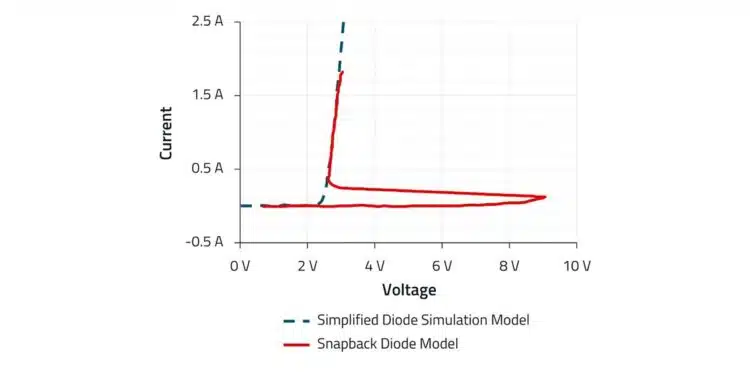Würth Elektronik, in cooperation with the Institute of Electronics (IFE) at Graz University of Technology, now offers an LTspice model for its TVS diodes and ESD suppressors for ESD protection, based on real measurement data using TLP (Transmission Line Pulsing).
This enables the actual behavior of the components to be measured under electrostatic discharge (ESD) conditions.
The ready-to-use simulation files facilitate integration into SPICE-based analyses and help shorten design cycles and time-to-market.
Conventional models of components for ESD protection typically rely on simplified approximations. The new models developed by Würth Elektronik and the IFE at Graz University of Technology, based on measurement data, however, reflect the actual transient properties, including snapback behavior.
The snapback effect allows the voltage to be clamped to a lower level after a transient overvoltage than is possible with standard PN diodes. This is a key aspect of ESD protection, as it reduces both the overvoltage and the resulting thermal stress on sensitive electronic components, so the ability to simulate it is a critical improvement to the development process.
Ensuring robust ESD protection
Simulating real transient behavior offers assurance in testing circuits under realistic conditions. Reliable simulations shorten testing and development cycles, and also reduce the risk of product recalls resulting from ESD vulnerabilities.
At the same time, they provide insights into component behavior, enabling design optimization to ensure consistent ESD robustness across all applications, from consumer electronics to industrial equipment.
LTspice models for realistic modelling of real component behavior during ESD events for products from the WE-TVS and WE-VE product series are now available in Würth Elektronik’s online catalog to download.
































